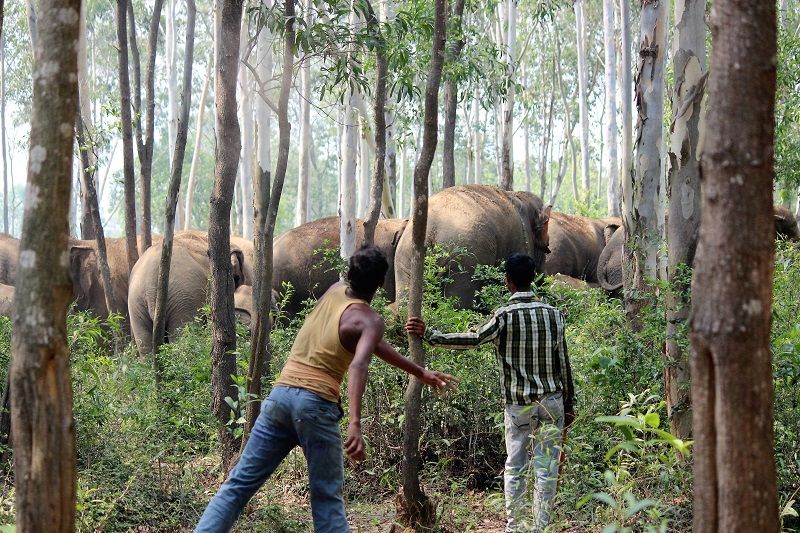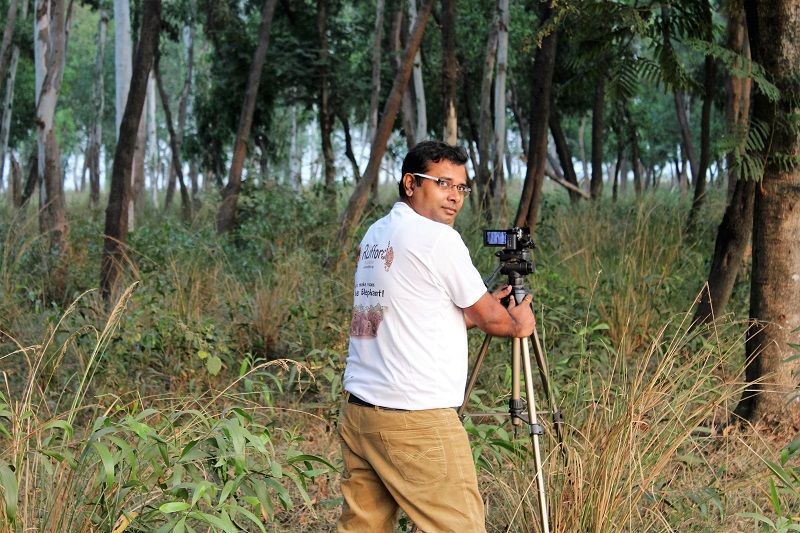Elephant Appeal
Make your donationDuring the pandemic, human-elephant conflict in West Bengal escalated badly
Before lockdown our colleague, Samya Basu, was identifying routes commonly used by elephants between two elephant reserves. Although there’s been some reforestation, much of the original forest has been replaced by crop fields, and the whole area is criss-crossed by train tracks, roads and overhead power lines. The elephants must traverse this dangerous landscape and tragically, since 2019, six elephants have died from train collisions or electrocution. Paradoxically, the problem is made worse by a recent increase in elephant numbers. The increase is welcome conservation news, but not necessarily for local communities. Now, multiple elephant herds take turns in eating crops from village fields, they’ve even learnt the seasonal availability of crops along their migration corridor. People’s livelihoods, homes and lives are at risk – it must be terrifying to have your home trampled by a herd of hungry elephants.

Lockdown
When India introduced a strict lockdown there was an unanticipated consequence. The elephants became noticeably more confident, entering villages and towns day and night, causing damage to homes and crop storage houses. At one point, 26 elephants all entered one town. Traumatised communities, some unaccustomed to elephants, protected crops with dangerous electric fences and snares. Five elephants were killed during lockdown by retaliatory action, and back in April this region’s first ever case of elephant poaching for ivory occurred. Samya’s extremely concerned this successful attack will encourage more illegal activity from professional wildlife trade poachers, now aware that elephants are living in accessible, unprotected forests.
See more images from West Bengal – please note some of you may find these images upsetting:
With our support, Samya will:
- identify all high-risk areas to elephants and advise on effective safety measures to immediately save elephant’s lives, such as regulating speed limits on train lines and insulating electrical cables.
- train elephant trackers from local villages to divert the elephant herds towards low-risk zones to reduce accidental deaths and retaliatory killings. Decreasing the conflicts between elephants and humans is the only way they can live peacefully side by side.
- create an elephant-friendly village featuring modern alarm systems, crop rotation and underground granaries. These humane measures will replace traditional and harmful deterrents like electricity, loud fire crackers and fire. Samya hopes other villages will follow the example of these methods.

With your help, we and Samya’s team can turn the increase in elephant numbers and recent reforestation in West Bengal into the conservation success it deserves, not something that puts them in greater danger.
We can help elephants and humans live alongside each other. Will you join us?

